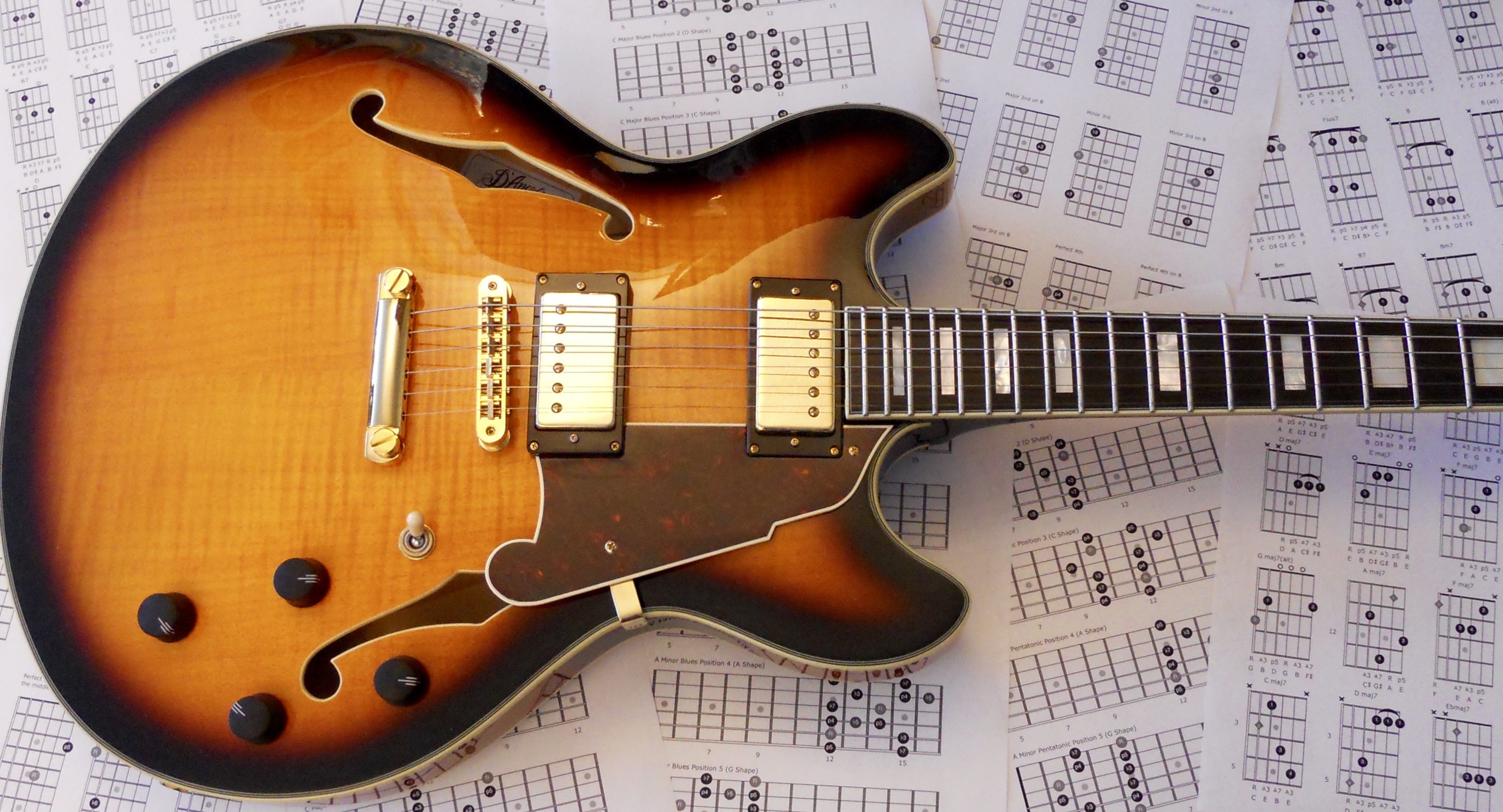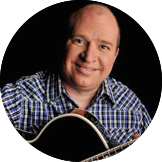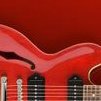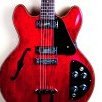-
Posts
316 -
Joined
-
Last visited
-
Days Won
40
Content Type
Profiles
Forums
Gallery
Events
Articles
Blogs
Downloads
Community Map
Everything posted by V7#5b9
-
@Triple-o Guitar Gathering site was never meant to be a temporary one. It was created as a successor to the old site that had been neglected by Legacy Learning Systems. They thought they had a better idea by creating a new platform on their “crowdguitar dot com” website. Well…, that domain is now for sale. Obviously it wasn’t as successful as they thought it would be. But you’re right, the number of beginners using the L&MG courses and this forum have dwindled. I guess it’s simply the nature of things. Although the courses are still available, they don’t seem to be promoted as much. In addition, there is a fierce competition out there, and a lot more good quality courses become available. Steve has changed focus as well. He does YouTube lessons, workouts, puts out mini-courses, etc. I’m aware of these things, but I don’t really follow Steve any more. To me, it’s just too much of the same old stuff in a new setting. Although Steve does attempt to enhance the material he presents, the nuts and bolts approach is still there. Don’t take it as sheer criticism. I simply have a more esoteric taste. As for the forum, the beginners usually don’t have much to say except for an occasional question. The old-timers eventually disperse, especially if there’s nothing interesting to engage in, and get busy with their own guitar learning paths. If it wasn’t for the “Recording Challenge” the site might be completely dead. I guess the solution to inactivity would be hiring someone, or someone volunteering to scout the Internet for guitar/music related information and post it on a regular basis.
-
Just to be an esoteric pedant. Modes are also scales. Mode is defined as a type of scale with a specific arrangement of intervals.
-
Here's yet another tribute to Pat Martino:
-
For those who dig PM, but don’t have a chance to see him live, here are some videos: In addition here's an interesting interview:
-
@Gary Nelson Congrats on your new acquisition and welcome to the Gibson ES-335 family. I would recommend a set of tools from Music Nomad and Peterson Stroboclip HD Clip-On Tuner. These tools are not cheap, but worth having if you do your own guitar setups. As far as the know-how on working the magic, well… this comes free with two YouTube channels: 1. Gibson’s Guide To Guitar Setup And Maintenance 2. How To Setup Your Electric Or Acoustic Guitar Good luck
-
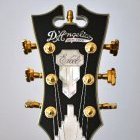
You Tube Video Links - Guitar Playing and Technique Related
V7#5b9 replied to NeilES335's topic in Guitar Playing & Technique
Intervallic Fretboard Visualization I’ve been using this approach in combination with the CAGED shape based system, as well as the Three Notes Per String scales for some time now. I find it the most powerful way of mastering the fretboard. I’ve recently come across Tom Quayle’s YouTube channel where he advocates the intervallic approach from a more generic perspective, but it applies across the board. I’m posting the following videos in the spirit of sharing good information. No promotion intended. I don’t have the app as I don’t really need it, but I suppose it might be a great tool for some. -

NGD 2020 Gibson ES-335 Satin Cherry
V7#5b9 replied to V7#5b9's topic in Guitar Gear, Amps, Effects, Pedals
Thanks Greg. I don’t know about the fabulous playing chops, but I’m glad to have the guitar. 🙂 -
Congrats on your new gear acquisition Greg. Enjoy the Kempers and make great music with this set.
-

NGD 2020 Gibson ES-335 Satin Cherry
V7#5b9 replied to V7#5b9's topic in Guitar Gear, Amps, Effects, Pedals
You may be right Six. I’m not sure what it is. Perhaps it’s an evolving technique. I remember as a beginner I couldn’t quite bond with a Strat. Its chunky neck felt like a baseball bat. Today a bit of meat doesn’t bother me. But I hope I won’t develop a dislike for thin necks. -
My belated condolences on your loss Mandy. Your music may have died, but that’s one thing you can resurrect.
-

NGD 2020 Gibson ES-335 Satin Cherry
V7#5b9 replied to V7#5b9's topic in Guitar Gear, Amps, Effects, Pedals
Actually in this case, Neil is closer. If you look at the Gibson price, it comes up to 25% exchange plus 13% tax and a free delivery from a local dealer. Of course, we don’t know the dealer’s cost. -

NGD 2020 Gibson ES-335 Satin Cherry
V7#5b9 replied to V7#5b9's topic in Guitar Gear, Amps, Effects, Pedals
No regrets here, either. -
So Gibson moved their ES line from Memphis back to Nashville in order to streamline production and focus on quality. Well, I thought I would never get one until now. The new generation ES line seems promising. I mean it has to be since there are so many great alternatives, and I own a couple. But I thought I couldn’t go wrong with the real ES-335 this time. The amount of precision that goes into making the guitar these days, thanks to modern technology and machinery, should make the instrument as good as it can be. Right? I took a chance and got one. Nothing fancy, satin finish which makes the guitar less expensive. I got an extra deal on it, too. It’s equipped the same as the higher models with more frills. The new T-Type pickups are really a modern version of T-Tops from the mid 60s and 70s. They really fit the vibe of this semi-hollow guitar and give it a warn, creamy sound. I love that. I was a little worried about the neck profile and how chunky it may feel. However, even though it has a little more meat to it than my usually preferred slim taper neck, it actually feels great. The rounded C neck makes it a joy to play. I realize the satin finish will develop shiny patches in high touch areas over time, but I’m OK with that. Now, is it better than my less expensive alternatives (D’Angelico EX-DC and Sheraton II Pro)? I have to say YES. The Gibson ES-335 is better, but the alternatives are pretty close. Each guitar has its own character, but put the same electronics in say the Epiphone and chances are you won’t hear the difference. And yet there’s nothing like the real deal, is there?
-
A stunner she is, congrats Mike!
-
@Wim VD1, @DianeB Thanks, I hope you are keeping safe and doing fine. And so is everyone else. Safe Holidays Everybody!!!
-

Slonimsky Exercises Edited for Guitar
V7#5b9 replied to NeilES335's topic in Guitar Playing & Technique
@NeilES335 I wonder if Frank Vignola has adapted these exercises from the book called “Thesaurus of Scales and Melodic Patterns.” This book originally published in 1947, was written by Nicolas Slonimsky (1894 – 1995), a Russian-born American conductor, author, pianist, composer and lexicographer. It is said Coltrane and other seminal jazz musicians derived a wealth of ideas for their solos from it. Richie Zellon came up with “24 Permutations of a 4 Part Chord Arpeggio” as well as their application in the formation of new jazz improvisational vocabulary. The system is included with Richie’s BGIS course. Alternatively, it is available as a mini course for $12 at https://jazzguitar.richiezellon.com/ Membership is free. -
Modal harmony has its peculiarities. In case of the five (variously referred to as) “Greek Modes,” “Church Modes,” or “Jazz Modes”: Dorian, Phrygian, Lydian, Mixolydian, and Locrian, you can’t establish mode defining tonality using harmonic scale (scale of chords) due to problems with the V7 – I progression, and some other harmonic incongruities. In other words, you can harmonize any one of the five modes, but you will find problems with the strongest and tonality defining V7 – I cadence. So, the trick is to combine modal melody with standard major-minor (Ionian-Aeolian) chord progression. Suppose you use the three principal chords in the key of D major (D, G and A7). The notes that make up those chords are: D E F# G A B C# D. Now suppose you write a melody using only the notes of the Dorian mode: D E F G A B C D. Two of the melody notes, F and C, will clash with the notes of the three principal chords. Those two notes are chromatic – they don’t belong to the key of D major. In order to preserve the Dorian mode feel, it’s important to avoid any instances of F# and C# in the melody. Furthermore, any modal scale can use any of the 12 chromatic notes as the tonic note. For example, the Dorian mode scale can start and end on the note E, provided you preserve the order of tones and semitones that defines the Dorian mode: tone, semitone, tone, tone, tone, semitone, tone. So, if you begin on the note E, the Dorian scale would be E F# G A B C# D E, and you would play the chords of E major: E, A and B7. On the other hand, just because modal harmony doesn’t work the same way as the major scale one, it doesn’t mean it’s completely useless. In the context of minor scales, the Dorian mode is frequently used as a key-centre scale with its own scale harmony. In the Dorian scale harmony the IV chord gets a dominant seventh quality. In jazz, modal cadences are used as modal reharmonization techniques.
-
Intervals Distance between two notes. There are consonant intervals and dissonant intervals. They’re divided into two categories based on acoustic properties. The consonances are actually divided into two groups themselves. Perfect Consonances - Unisons - Octaves - Fifths - Fourths The math and tunings of these intervals work out perfectly. That’s why the Fourths & Fifths are called “Perfect.” Imperfect Consonances - Thirds - Sixths They can be slightly sharp or flat. The math didn’t work out perfectly for those intervals, but they're still consonances. Dissonances - Seconds - Sevenths - Diminished - Augmented The study of consonance and dissonance, and music in general, is crucial to understanding how music works. Classical composers were very careful about how they introduced dissonance and how they resolved it. The study of this is called counterpoint.
-
It is rather difficult to explain all the benefits of fretboard visualization techniques in a simple post. As the above-mentioned article alludes, it’s highly unlikely that any beginner would realize that the E, A, and D are identical in construction and voicing. But, this is only the tip of the iceberg. CAGED system is one such technique, but it depends on how far one is willing to take it. Learning shapes without studying their anatomy, may or may not be enough, depending on the players goals. Learning chord shapes, formulas, intervals, spellings, etc., is part of the deal. Beginner courses don’t even mention how visualizing the fretboard from the perspective of string sets can enhance your understanding of it. And there’s so much more …
-
@DianeB, If you are interested, the following article by Howard Morgen gives additional insights with regard to the guitar’s irregular, unequal standard tuning. Fingerboard Insights For All Guitarists
-
I’ve been using courses by Griff Hamlin, TrueFire and Richie Zellon. I respect the reasoning behind sticking to a core instruction, but eventually one may want to expand one’s horizons. Granted, it does require the effort of charting one’s own plan or learning path, but I’m okay with that. On the other hand, there could be other reasons, too. For instance, I found that Steve's Blues course covered a lot of ground, but I needed more spoon feeding so I switched to Griff's BGU. Griff has a series of courses tailored to blues and he touches on details one can probably only get through private one-on-one sessions. For someone like me who relies on video and textbook courses only, more explanation was/is necessary.
-
Sorry guys, but I find it a little strange how a thread can prompt so many seemingly related, yet irrelevant responses, while some other threads with relevant information prompt so few of them. Then again, it’s the Open Talk section, so there’s some grey area here. On the topic, I have the White Album on old vinyl as well as part of the remasters collection on CDs. However, I’m not catching the bait every time they come up with an “up-sell” scheme. Thanks for the article @Plantsman13. Some interesting info in there.
-
Well then… I guess it doesn’t matter if I say that Richie Zellon does expand on the language concept. I’ll give you a few examples. Cells and/or motifs can be grouped and developed into phrases. A cadence in music syntax is the equivalent to a sentence in spoken language. Several cadences chained together form a musical paragraph. Cadences can be classified as weak or strong, a weak cadence is like a comma, a strong cadence is like a period. Richie himself admits that college failed to teach him how to improvise. That’s why he had to take lessons from the pros. As a result, he is not only a better jazz improviser, but also a better jazz guitar teacher. If a teacher just tells you to use and experiment with the mixolydian mode over a dominant 7th chord without further explanation, you will have a hard time developing a coherent line. On the other hand, if you learn the jazz language, you will be able to develop a coherent line from scratch. I suppose music colleges do a better job these days, but if a student just learns the same licks as others, and uses a plug-and-play idea without developing his or her own ideas and style, he or she will sound like all the other students. Anyway, I wouldn’t order a pizza speaking jazz, either.

